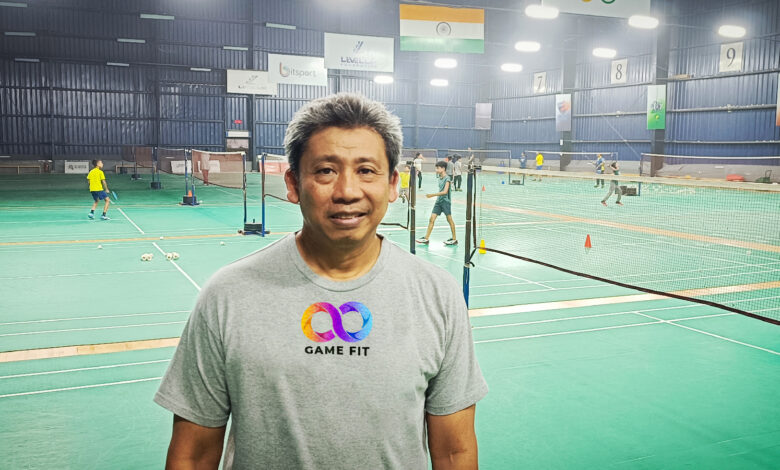Sindhu needs strategy, Srikkanth more endurance, Lakshya Sen and Rajawat wilt against better players, and Indians need more ambition: Agus Santoso’s prescription | Badminton News

Where 59-year-old badminton coach Agus Dwi Santoso comes from in Malang, Indonesia, there is a famous water park with a highlight joy-ride called ‘Tsunami’. Agus guided top names in India like PV Sindhu, B Sai Praneeth and Kidambi Srikanth, and coached the elite in Indonesia, Korea and Thailand. He restates the philosophy followed Pullela Gopichand in India, when HS Prannoy peaked in 2023, and bought into Lakshya Sen, which is also a favourite with other Indonesian coaches like Mulyo Handoyo. He repeats it like a grandpa’s tale.
“In badminton training, you can reach 80-90% of physical potential, before the body tells the brain, ‘Enough’. But winning and losing in a tournament is decided on that last 10% after you are tired. It’s like fleeing an approaching tsunami running fast, and having no choice but to climb a coconut tree high enough if you don’t want to die. But where will the energy come from for the last 10%?” he says.
“Indian players have to work on that 10% and push themselves,” he sighs.
Agus played a part in guiding Olympic silver medall Hendrawan, and helped Korea’s hyper-defensive shuttler Son Wan Ho become world champion – getting both to ace ‘the last-10%’. Camped at the Game Fit private academy in Bengaluru, winding down his coaching career to mentor beginners, as he approaches 60, the Indonesian has a clear read on why India has hit stagnation, having worked with many of them.
On Sindhu, Agus can nail the issues, but admits he doesn’t have all the answers. “It’s not about hard-work now, her game has to get far more efficient now. The way she played when younger, she relied too much on physical strength. And her explosive power was so good, she needs to dig deep in skill, stroke and strategy. Now she knows a bit of strategy. She already is a hard worker but now she needs to get more efficient,” he says.
Agus links most Indian problems of ageing players to efficiency that Lin Dan and Lee Chong Wei had, and Indians don’t. “The Indian footwork and movement isn’t efficient. You can’t think of badminton just as strategy and physical activity, but those two were efficient playing into their 30s because they used a fraction of energy in court movement compared to opponents. If an Indian uses 8-10, they use 2-3 only. Till 25-26, it’s hard work, after that it’s just maintaining. But with efficiency you can be world champion even at 32-33. They could out-think anyone and had good rapports with coaches,” he explains.
There’s also the easily satiated ambition. “You need a mentor/coach who tells you one World Championship title is OK, but not world class. Indians think one title is enough. The Chinese-Indonesians will win 2-3 All Englands and say they want one more. Way of thinking here must change,” he says bluntly.
For Kidambi Srikanth, Agus’ prescription is: “more endurance. Lots more.”
With Sen, Agus sees potential in him becoming a complete player, if he believes in himself. “He should’ve won the Paris medal,” he clucks, adding, “Nothing is wrong with him, everything is OK. But if he comes up against a better rally player than him, then he’s not prepared for any style. He’s not complete yet. Lakshya has very good defense, but if he meets a better stroke-maker he has big problems. But coach will have to help him,” he states.
There’s similar issues with Priyanshu Rajawat too. “He is a very, very smart talent. Full of intelligence. But again, if he runs into a better stroke-maker, his shuttle control dips. We have to see if he works hard and can stay away from injuries.”
He brooks no negative projections of Satwiksairaj Rankireddy and Chirag Shetty, and says only injuries can hold them back at Los Angeles. “For me, I call them monsters. They are so tall. They are brilliant and everybody is afraid of the two Indians. Maybe the flag pressure got to them, and their mental strength was less than ideal at the Olympics because of injuries. But there is no need to change their style, and they don’t need to learn anything from Indonesians. They have their own style,” he says.
Of the youngsters, he is impressed with Anmol Kharb: “full of talent, but don’t know. She was unknown till now, next time everyone will know how to attack her.” In men’s singles, he sees good potential in Sathish Kumar Karunakaran: “good talent, defence and attack.”
Agus reckons Indian coaching for beginners is all-over-the-place. “The basics – grip, footwork and techniques, can be amateur at times. Not world-class or in tune with changes sweeping world badminton,” he says.
Why has China stayed consently successful in badminton? “China works together on one campus which has training courts and a hospital. In India, we waste so much time dealing with injuries. 4-5 days spent on figuring which bone is broken. There everything is at one centre. Their coaching and selection is coordinated, with all academies instructed on technique basics. Every 4-5 years, CBA coaches undergo standardisation with Do’s and Don’ts and are taught about changes.”



